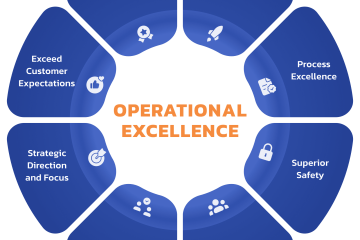Introduction
Water damage is one of the most common and potentially devastating problems a property owner can face. Whether caused by natural disasters, plumbing failures, or other unforeseen events, water damage requires immediate attention to prevent long-term structural issues and health hazards. This article will provide a comprehensive guide to water damage restoration, covering everything from the causes and types of water damage to the restoration process and preventative measures. By understanding these critical aspects, property owners can better manage the risks and effectively restore their properties to their original condition.
Causes of Water Damage
Water damage can stem from various sources, each with unique characteristics and implications for restoration:
Natural Disasters
Natural disasters such as floods, hurricanes, and heavy rains can lead to significant water intrusion. Floodwaters often carry contaminants and debris, complicating the restoration process.
Plumbing Failures
Burst pipes, leaking faucets, and malfunctioning appliances are common causes of water damage in residential and commercial properties. These issues often go unnoticed until significant damage has occurred.
Roof Leaks
Damaged or aging roofs can allow water to seep into the building, leading to water damage in attics, ceilings, and walls. Roof leaks can result from weather-related wear and tear or poor maintenance.
Sewage Backups
Sewage backups occur when wastewater from toilets, sinks, and drains flows back into the property. This type of water damage is particularly hazardous due to the presence of harmful bacteria and pathogens.
Types of Water Damage
Understanding the different types of water damage is crucial for determining the appropriate restoration approach:
Clean Water Damage
Clean water damage involves water from sources like broken pipes, overflowing sinks, or rainwater. This type of water is free from contaminants and poses minimal health risks.
Gray Water Damage
Gray water damage involves water from sources such as washing machines, dishwashers, and sump pumps. This water may contain some contaminants and requires proper handling and cleaning.
Black Water Damage
Black water damage is the most severe type, involving water from sewage backups, flooding, or natural disasters. This water is highly contaminated and poses significant health risks.
The Water Damage Restoration Process
Restoring a property after water damage involves several critical steps to ensure thorough and effective recovery:
Initial Assessment and Inspection
The first step in the restoration process is a detailed assessment and inspection. Professionals use moisture detection equipment to identify the extent of the damage and the affected areas.
Water Extraction
Removing standing water is essential to prevent further damage and mold growth. High-powered pumps and vacuums are used to extract water quickly and efficiently.
Drying and Dehumidification
After water extraction, the drying process begins. Industrial-grade air movers and dehumidifiers are used to remove moisture from the air and surfaces, preventing mold growth and structural damage.
Cleaning and Sanitizing
Cleaning and sanitizing are crucial, especially in cases of gray or black water damage. This step involves cleaning affected surfaces, removing debris, and applying antimicrobial treatments to prevent mold and bacteria growth.
Restoration and Repairs
The final step is restoring the property to its pre-damage condition. This may involve repairing or replacing damaged drywall, flooring, and other structural elements. In severe cases, reconstruction may be necessary.
Preventative Measures
Taking preventative measures can significantly reduce the risk of water damage and minimize its impact:
Regular Maintenance
Regularly inspect and maintain plumbing systems, appliances, and roofing to identify and address potential issues before they cause significant damage.
Install Water Detection Devices
Water detection devices and alarms can alert property owners to leaks and water intrusion early, allowing for prompt intervention.
Proper Drainage Systems
Ensure that gutters, downspouts, and drainage systems are functioning correctly to direct water away from the property. Proper grading and landscaping can also help prevent water from pooling around the foundation.
Sump Pump Installation
Installing a sump pump in basements or low-lying areas can help remove water that accumulates during heavy rains or flooding, preventing water damage.
The Importance of Professional Water Damage Restoration Services
While some minor water damage issues can be addressed by property owners, professional property restoration Bradenton services are essential for severe or widespread damage. Here are some reasons why hiring professionals is crucial:
Expertise and Experience
Professional restoration companies have the expertise and experience to handle various types of water damage. They can quickly assess the situation and implement the most effective restoration strategies.
Advanced Equipment
Professionals use advanced equipment such as industrial-grade dehumidifiers, air movers, and moisture detection devices. This equipment ensures thorough drying and restoration, preventing mold growth and further damage.
Safety and Health Considerations
Handling water damage, especially gray and black water, involves health risks due to potential contaminants. Professional restoration services follow strict safety protocols and use protective gear to mitigate these risks.
Efficient and Timely Restoration
Time is critical in water damage restoration. Professionals can quickly mobilize and complete the restoration process efficiently, minimizing the disruption to property owners.
Understanding Insurance and Water Damage Claims
Navigating insurance claims can be a daunting task for property owners dealing with water damage. Understanding your policy, coverage limits, and the claims process is essential to ensure you receive the compensation needed for restoration. Most homeowner’s insurance policies cover sudden and accidental water damage, such as burst pipes or overflow from appliances. However, damage due to neglect, such as long-term leaks or lack of maintenance, is typically not covered. It’s crucial to document the damage extensively with photos and detailed descriptions, keep receipts of all related expenses, and maintain open communication with your insurance adjuster. Professional restoration companies, like Above & Beyond, often assist clients with the insurance claims process, providing detailed reports and working directly with insurance companies to ensure a smooth and successful claim.
Psychological Impact of Water Damage
Beyond the physical destruction, water damage can have a significant psychological impact on property owners. The stress and anxiety of dealing with the immediate aftermath, the disruption to daily life, and the uncertainty about the restoration process can take an emotional toll. Additionally, concerns about potential mold growth and long-term health effects can add to the stress. It’s important to address these emotional aspects by seeking support from family, friends, or professionals. Restoration companies, like Above & Beyond, not only focus on the physical restoration of properties but also understand the emotional burden their clients face. By providing clear communication, timely updates, and empathetic support, they help alleviate some of the stress and anxiety, ensuring that property owners feel confident and reassured throughout the restoration process.
Conclusion
Water damage restoration is a complex and multi-faceted process that requires immediate attention and professional expertise. Understanding the causes, types, and restoration steps can help property owners effectively manage water damage and restore their properties to their original condition. Preventative measures are also crucial in reducing the risk of future water damage. By staying vigilant and proactive, property owners can protect their investments and ensure a safe and healthy living environment.
Final Thoughts
Water damage is a serious issue that requires immediate and effective action. By understanding the restoration process and the importance of professional services, property owners can better navigate the challenges of water damage and protect their properties. Preventative measures and regular maintenance are key to minimizing the risk and impact of water damage. Stay informed, stay prepared, and take prompt action to safeguard your property from the damaging effects of water intrusion.



